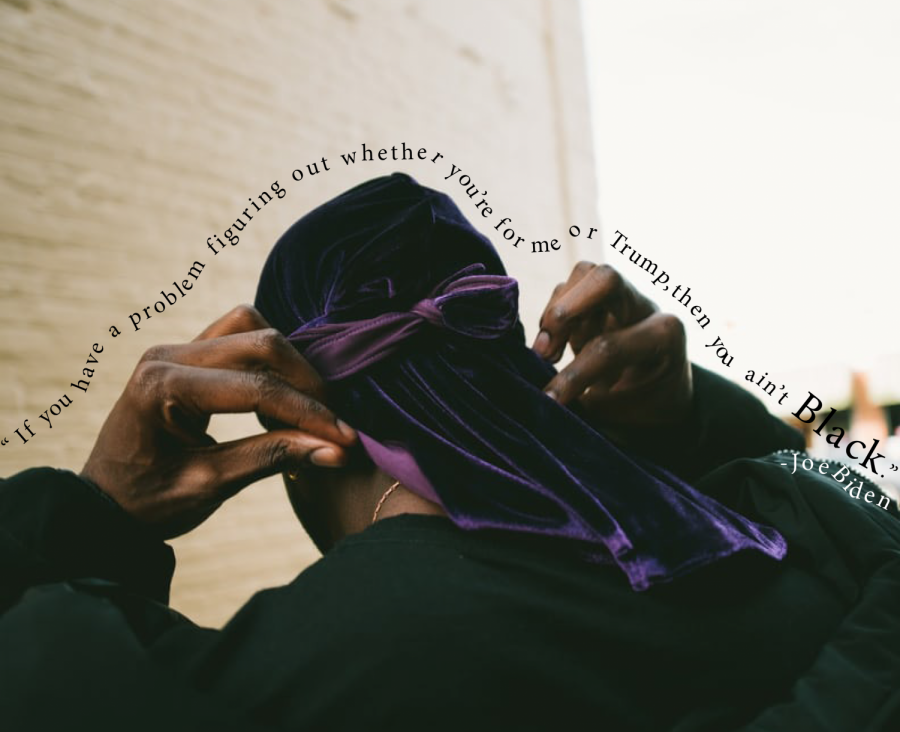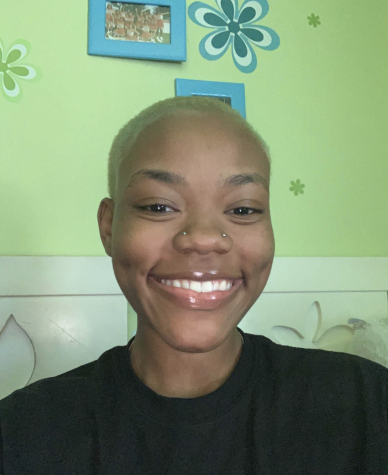Exploring the relationship between people of color and the Democratic party
Winning takes strategy. In the 2020 presidential election, some politicians are open with the way they feel about people they are serving, Trump calling Black people “Blacks” or talking about “shithole countries” is how he wins. Others win by encouraging marginalized people to vote for them..
“If you have a problem figuring out whether you’re for me or Trump, then you ain’t Black,” President-elect Joe Biden said in a May interview with Charalmange Tha God, host of The Breakfast Club radio show.
This election has shown many people, mainly Black people and People of Color, the length that the candidates will go to secure their votes. Biden helped his campaign by securing Senator Kamala Harris as his running mate. According to an August Politico poll, this decision was popular among Democrats with 84% support, and Black voters by nearly 80%.
“It seems one way because it’s essentially never been done, Black people are not usually targeted in presidential elections,” said Teja Foster, social media manager for Rock the Vote. “It feels like pandering when we see Hillary Clinton doing the “nae nae” and saying she has hot sauce in her bag. They really truly don’t know what to do because it’s never been done.”
What presidential candidates have been doing to secure votes might seem a bit obscure. Foster said that the 2016 and 2020 elections were not the first time that Presidential candidates have been willing to go to extensive lengths to get votes, but it does seem more overt now that we are in the digital age.
“When Bill Clinton was running, in most of his campaigns, even the early ones Rock the Vote did, he’s connecting with youth and doing all of these leadership things, and Black people loved him,” Foster said. “But did he necessarily super campaign to Black people? Or did he do somethings and Black people were like ‘oh yeah, he’s real, he’s not like these other politicians.’ So, no one really does it. So it looks that way because we’re just in a digital age and they’re trying necessarily anything.”
The 2020 election was no different, political candidates continued to encourage many people to vote. President-elect Joe Biden tapped Vice President-elect Harris as his running mate. Former President Obama made an appearance on the popular Instagram blog, the Shaderoom, to convince their followers to vote by meeting their audience on social media. Atlanta rapper 2 Chainz was performing his 2012 song, “I’m Different” at a Biden-Harris Rally. “I think this next administration that I support, which is Biden-Harris, they offer something different,” 2 Chainz said before he started his performance.
“It was a way definitely to connect with Black voters,” Foster said. “I actually worked with the organization, She the People, who pushed for that, that he must choose a Woman of Color in order to win because without one he would have no hope.”
She the People is an organization led by Women of Color that is centered around creating politics that have not been seen by the world yet, according to their website. Aimee Allison, the founder, held one of the first national voting outreach efforts in order to reach Women of Color in states that were key in determining who the 2020 president-elect would be.
Throughout history there have been strict obstacles when it came to gaining the right to vote. Women were not granted the right to vote until August 18, 1920, but the Suffrage movement was one sided. The face of the movement, Susan B. Anthony, has been denounced in recent years for her belittlement of the Black Suffrage movement, even as there were notable Black suffragettes like Ida B. Wells and Sojourner Truth, according to a PBS article.
“I will cut off this right arm of mine before I will ever work or demand the ballot for the Negro and nor the woman,” Anthony said during an 1866 meeting for the American Equal Right Association with Fredrick Douglas.
When people were fighting for the right to vote in the late 1960’s there were poll taxes that, in places like Mississippi, created barriers for the Black population, who were usually the poorest, according to the Constitutional Rights Foundation. Literacy tests, where people had to read a section of The U.S. Constitution and explain it to the county clerk prevented many Black people from voting due to illiteracy, from lack of equal educational opportunities because of segregation and oppressive systems Black people were faced with. Because of these past obstacles that people fought and died to get rid of, the need to vote is stressed within the Black community.
According to a PEW Research article, in the 2016 election, the voter turnout rate for Black voters was the lowest in 20 years. During the 2016 election, only 59.6% of Black people voted, 6% down from the 66.6% of Black people that voted in the 2012 election. In the same years, the number of Latino voters went from 58% in 2012 down to 47.6% in 2016.
“A candidate can’t win without a Black or Brown support system,” Foster said.
Even as politicians have gone out of their way to make some people feel as though they are the backbone of the campaign, other people are forgotten completely. Ali Salahi, a data scientist in San Francisco and an Afghan and Muslim-American, said that in this election, Bernie Sanders was the only candidate who embraced the Muslim-American community during his campagin.
“I think Afghan-Americans are a very very small group. I don’t remember ever being addressed directly. However, [with] Muslim-Americans, there’s a lot more outreach that goes on. I think politicians do target that group a lot more closely. On one side, to vote for them; on the other side very negatively,” Salahi said in regards to the strained relationship politicians have with Muslim-Americans.
Salahi basied on his personal findings, he sees that Muslim-Americans are targeted more closely in elections. Most of the time there is only a one-way relationship between politicians and the people that vote for them. Information about the people running for these positions tend to be public after they become a public figure.
“I’m constantly reminded that I need to stop holding politicians in this celebrity ideal,” Salahi said. “They’re just people, they’re usually not good actually. Even the ones you like never really represent you.”
Salahi explained that he used to idealize his relationships with politicians and thinks that it is more important to treat them as transactional. In a way, every citizen has a relationship with a politician.
“I need to divorce myself from taking it personally when I’m disappointed by a politician,” Salahi said. “I need to stop having expectations that they’re going to do the right thing.”
Salahi thinks that the lack of interaction with the Mulsim-American community is due to the fact that engaging with the community could hurt their chances of winning. According to the Daily Beast reporter, Dean Obeidallah, the Democractic party went from rejecting the Muslim-American vote to embracing it with the recent 2020 election.
“It feels a little corny to be targeted like a marketing focus group,” Salahi said. “It doesn’t feel as genuine as I would like, but I get that this is like a billion, trillion dollar industry and I get that’s just the way it works.”
In a way, this election felt personal for everyone. For example, President Trump’s travel ban on Middle Eastern countries, or the way he addressed the current pandemic by calling it the “kung flu” in June. Compared to the 2016 election, over 137.5 million people voted, according to the US Elections Project and it has increased over 20 million voters in the 2020 election, according to CNBC.
This year, political candidates reached people in their homes through phones and emails at a higher rate due to the pandemic. Local politicians such as San Francisco District 10 Supervisor, Shamaan Walton, took those tactics and brought them to the voter by meeting them in person. Within his team, they focused on connecting with people at their homes and asking them how they could be the most effective elected officials in the district.
“Obviously, tactics are different locally versus nationally how folks approach election,” Walton said. “I mean here we focus on catching people at their homes and pushing our message, letting them know the things we want to fight for and how we can be effective as elected local officials.”
Walton pointed out the obstacles that some voters faced with the 2020 election. For instance, Walton explained that asking for Identification requirements could be a possible way to suppress voters in some states.
“As you see how things have played out on the national level, some folks, particularly in different states and different other localities, trying to stop folks from voting, by trying to say we can’t have mail in ballots unless they’re requested. They tried to do that even during a pandemic,” Walton said.
More people voted in this election than ever before. Everyone was involved, there were over 100 million early mail in ballots, according to the U.S. Elections Projects. Stacy Abrams, the former Georgia House Representative, founded the voting organization, Fair Fight, which has registered over 800,000 new voters in the state of Georgia. Out of those 800,000 registered new voters, 45% were under the age of 30 and 49% of them were People of Color, Abrams said in an NPR interview.



